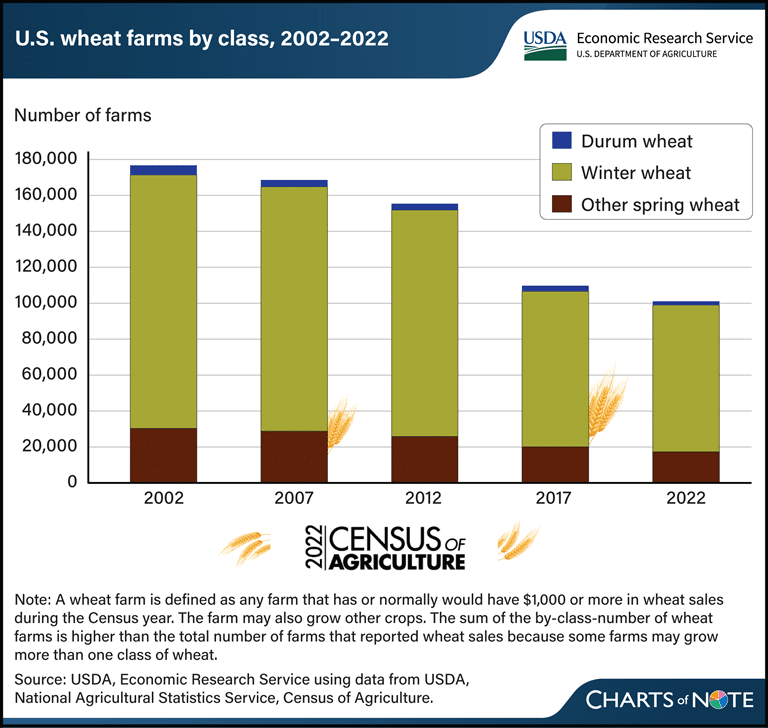Latest USDA Ag Census details decrease over past two decades.
According to the latest 2022 Census of Agriculture from the USDA’s National Agricultural Statistics Service (NASS), there has been a substantial decrease in the number of farms producing wheat over the past 20 years. The 2022 data reveals a dramatic 43-percent reduction in wheat farms since 2002. From 169,528 farms reporting wheat production in 2002, the number has fallen to 97,014 in 2022.
This decline is consistent across all classes of wheat, with winter wheat farms, which constitute 84 percent of all U.S. wheat farms, experiencing a 42-percent decrease. The number of farms cultivating durum wheat saw the steepest decline at 59 percent, while those growing spring wheat (excluding durum) dropped by 43 percent.
The overall volume of wheat produced in the U.S. has slightly decreased, largely attributed to a reduction in harvested acreage. As farmers turn to more profitable crops, wheat is increasingly being rotated with corn and soybeans, which offer higher returns.
Among the key wheat-producing states, Kansas, home to 15 percent of the nation’s wheat farms, reported a 40-percent decrease, losing 9,716 farms between 2002 and 2022. Texas and Oklahoma also saw significant reductions, with decreases of 54 and 47 percent, respectively. Collectively, these three states accounted for nearly one-third of all winter wheat volume produced in 2022.
For further details, visit the NASS Census of Agriculture website or refer to the USDA Economic Research Service’s special article, “U.S. Census of Agriculture: Highlighting Changing Trends in Wheat Farming,” featured in the March 2024 Wheat Outlook.











